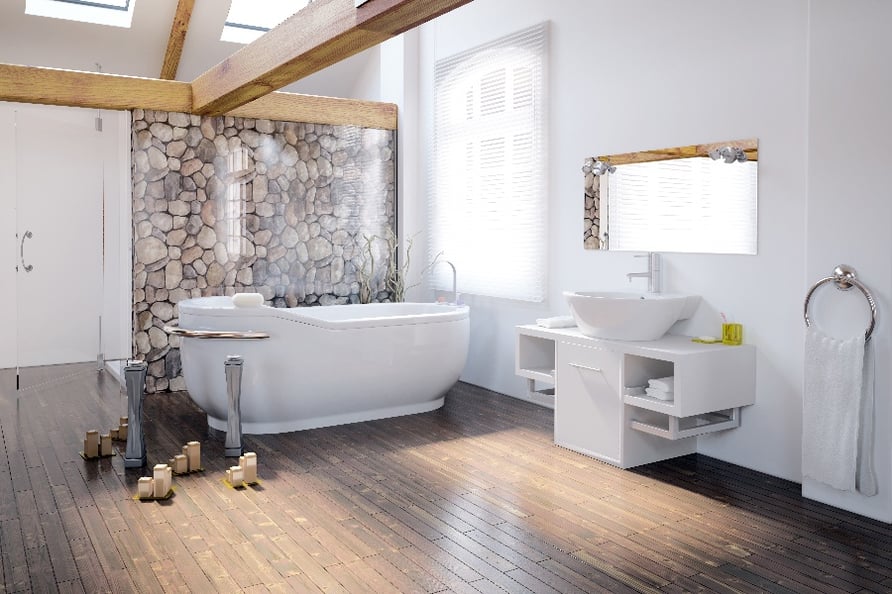It’s the most wonderful time of the year. Wait… Christmas, again? In May? No, it’s spring! ‘Tis the season to put away the parkas and break out the windbreakers. The last 10 years have given us 75% more days with 50-degree temperature swings than the previous decade. This, alongside the seasonal transition, means that homeowners are compensating for the climate. Having a home that is always working overtime raises utility bills unexpectedly, and since the average American household already spends over $2,200 a year on utility expenses, all homeowners should take a look at these 4 methods to reduce that annual punch to the wallet! We’re going to break these methods into three categories, based on when you’ll feel the most positive impact: Day One, Month One, and Year One.
4 Methods to Reduce Your Annual Utility Bills
Day One...

Change Your Shower Head
There aren’t many activities more routine than taking a shower, and since the average American showers at least 5 times per week, it’s a huge opportunity to reduce utility bills. On top of that, the average American shower uses 17.2 gallons of water per soapy session. Do the math, and that equates to an average annual water consumption of 4,472 gallons during showers alone! Changing the head in your shower can drastically reduce a home’s monthly water bill by over 50%, simply by choosing a shower head with a lower flow rate than the current head installed. When doing your shopping, look specifically for heads with the WaterSense label. Those are certified by the Environmental Protection Agency to meet certain efficiency criteria. Remember, flow rate is not necessarily consistent with pressure. An efficient shower head can still provide the water pressure needed to give you that TV-ready volume in your hair!
Month One...

Stop Nudging Your Thermostat
Traditionally, dropping your thermostat by 10 degrees while you’re away was a really simple way to reduce your heating and air conditioning bills by 10% and 15% respectively. Traditional thermostats make it near impossible to keep this up consistently and, often times, programmable thermostats don’t have enough granular options to allow you to maximize your utility savings. Modern smart thermostats are marketed as the quick-fix solution for this problem, but the thermostat is only as good as the home that surrounds it. In the long term, picking a comfortable temperature, considering the insulation of your home, and finding a more efficient heating and cooling system will pay dividends over time. Check out this article that talks about some steps you can take before considering a thermostat swap.
Lower the Temperature of Your Water Heater
Now, realistically, how often do you think about your water heater? Exactly. The water heater is one of those things that never crosses a homeowners mind – unless a new one is needed. However, as a source for savings, simply reduce the default temperature of your water. Most water heaters have a default setting of heating to 140 degrees. Every 10 degrees in heating temperature can result in 5% annual savings! Our recommendation: Save 10% annually on this portion of your utility bill by reducing the temperature to 120 degrees. Search online for your model’s owner’s manual (because who actually remembers where they put those) to find out how to do this on your specific water heater. Don’t worry, you’ll still get water that is plenty hot for your dishes and showers!
Year One...

Upgrade Your HVAC System
Geothermal heating and cooling systems have countless benefits over traditional HVAC solutions, and since the average traditional system only lasts 13 years, your system may already be due for an upgrade. Geothermal systems will reduce your annual heating and cooling bills by up to 70%, have around double the life expectancy of traditional HVAC systems, are up to 500% more efficient than the system you currently have installed. Additionally, homeowners can use their geothermal system to heat their water for everything from their sink to their pool. On top of being extremely safe and the most environmentally friendly heating and cooling solution out there, a geothermal heat pump (GHP) is the best all-around solution for the discerning and budget-conscious homeowner.
Heating and cooling is by far the largest expense on your annual utility bills, but these 4 tips should set any homeowner on the right path to saving hundreds of dollars each year on their home energy costs, especially during these transitional seasons! If you’d like to learn more about how to make the biggest impact in your home’s efficiency, download our Simple Guide to Choosing a Heating and Cooling System.


